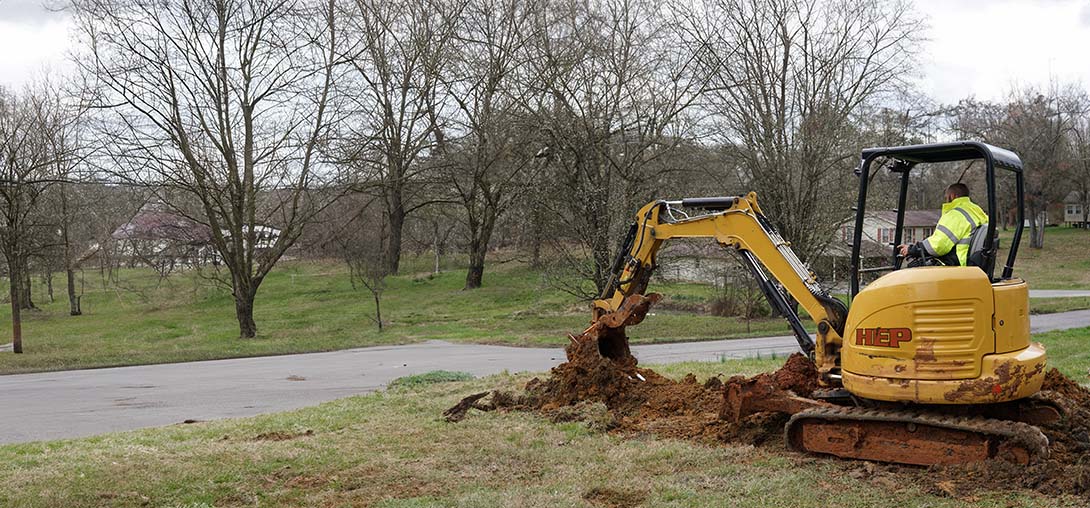- HEP
- Main Line Problems

 Main Line Problems
Main Line Problems
Main Line Problems | Main Line Issues | Plumbing | Heiskell
When water starts gurgling in your tub, toilets bubble, or multiple drains clog at once, it’s a tell-tale sign of main line issues deep within your plumbing. In Heiskell’s mix of older farmhouses and newer builds, tree-root invasions, shifting clay soil, and years of grease buildup can choke the primary sewer line, threatening costly damage to your home and yard. HEP’s licensed pros arrive with video-scoping cameras, hydro-jetters, and trenchless repair technology, turning a messy nightmare into a swift, precision fix—often in a single day.
From the first courteous phone call to the final cleanup, you’ll feel why Heiskell neighbors trust HEP for main line solutions that are transparent and stress-free. We pinpoint the blockage, explain your options in plain language, and back our work with warranties that keep you protected long after the water is flowing freely again. Don’t wait for that next backup; reach out to HEP today and put your plumbing worries behind you.
FAQs
What are the most common signs that my main sewer line is blocked?
Typical warning signs include multiple fixtures backing up at once (for example, toilets and tubs gurgling together), water pooling around a floor drain, slow-draining sinks throughout the house, sewage odors in or around the property, and unusually lush or soggy patches of lawn above the pipe path. If you notice any of these in your Heiskell home, call a licensed plumber promptly—waiting can cause wastewater to back-flow into living spaces and lead to costly cleanup.
What causes main line clogs in Heiskell homes?
In our area, blockages are most often created by a combination of grease buildup, flushed wipes or hygiene products, food scraps from garbage disposals, and intrusive tree roots seeking moisture in the line. Older clay or cast-iron pipes common in Heiskell subdivisions are also prone to cracking and letting soil or debris enter the pipe. Heavy spring rains can wash sediment into cracked joints, accelerating a clog.
Can tree roots really damage my sewer main, and how is this fixed?
Yes. Roots are attracted to the nutrient-rich moisture seeping from tiny pipe joints or cracks. Once inside, they expand, trap solids, and eventually break the pipe apart. A plumber will typically run a camera inspection to confirm root intrusion. Minor root masses can be cleared with a mechanical auger or hydro-jetting, followed by root-inhibiting foam. If the pipe is fractured, trenchless techniques such as pipe lining or pipe bursting are often recommended in Heiskell to preserve landscaping while restoring full structural integrity.
Should I repair or replace a damaged main line, and how is that decision made?
A professional will weigh the pipe’s age, extent of damage, material, and overall service life. Local Heiskell plumbing codes and your budget also play a role. Small, isolated cracks or single offsets can usually be repaired with a sectional liner. Widespread corrosion, multiple bellies, or collapsing segments usually justify full replacement—often via trenchless bursting to avoid digging up driveways or mature trees. A recorded video inspection allows you and the technician to see the real-time condition and choose the most cost-effective long-term fix.
How much does main line repair cost in the Heiskell area?
Prices vary with pipe depth, length, material, access, and whether you choose traditional excavation or trenchless methods. As a ballpark, snaking or hydro-jetting to clear a clog ranges from $250–$600. Spot repairs with trenchless lining typically run $85–$150 per linear foot, while full replacement might range from $4,000 for a short PVC run to $12,000 or more for deep, long, or heavily landscaped lines. Reputable plumbers will provide a written estimate after a camera inspection and explain any city permit fees applicable in Knox or Anderson County.
What preventive maintenance can I perform to avoid future main line issues?
1) Schedule a professional camera inspection every 2–3 years to catch early problems. 2) Avoid flushing wipes, feminine products, paper towels, or excessive grease—even labels saying “flushable” can accumulate. 3) Install drain strainers in showers and sinks to trap hair and debris. 4) Have large trees near the sewer path root-pruned or treated annually with a safe root inhibitor. 5) If your home is older than 30 years, consider a preventive hydro-jetting service each spring before heavy rainfall raises groundwater levels. Consistent habits and maintenance dramatically reduce emergency calls and extend the life of your main line.